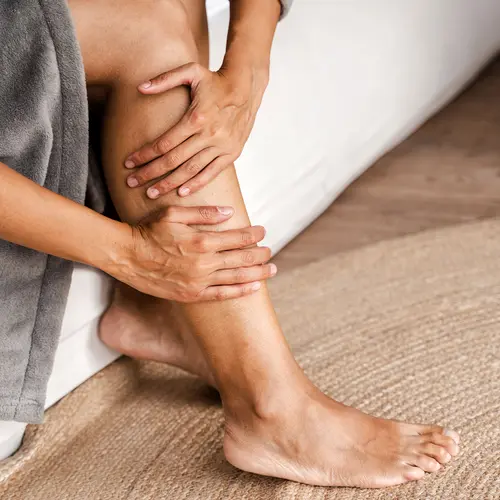Among people with deep vein thrombosis, or DVT, around 30% will develop post-thrombotic syndrome. Also called chronic venous insufficiency (CVI), it happens when the high blood pressure from DVT harms valves in your heart.
These valves – or one-way, swinging-door like flaps called leaflets – act as a barrier to stop blood from leaking back down your veins, a condition called reflux. When damaged, the one-way leaflets can weaken and give way so that when you stand or sit, your blood not only can flow backward, but pool in one place. Pressure can build up and swell your veins, which can pull apart the leaflets below it too, and make the problem worse.
Past treatments for deep-vein CVI have mainly eased symptoms, such as meds to aid blood flow or compression garments like stockings.
But there’s good news on the technology front. The FDA has recently fast tracked a new bioprosthetic venous valve that replaces the damaged valve and mimics normal functions. Studies have shown that having surgery to insert the new valve can help curb reflux, improve the condition of the disease, sharply reduce pain, and enhance quality of life.
What Is It?
The bioprosthetic venous valve, called VenoValve, is about an inch-long stainless-steel frame with a porcine aortic leaflet – or a flap from well-preserved pig heart valve tissue – sewn to it.
Repair surgeries performed in the vein are technically demanding and require a vascular surgeon to perform them. Your surgeon first will make a 5 to 6-inch cut in your upper thigh. They’ll use clamps to stop blood flow through your femoral vein, a deep vein that carries deoxygenated blood to your heart. They’ll make a 1 to 2-inch cut down the vein, insert the VenoValve, and securely sew it to the vein.
The procedure should take only about an hour. You might stay in the hospital overnight for your comfort.
How Does It Work?
When exercised, your leg muscles pump blood up through your veins and through the VenoValve. When you relax your muscle, the valve closes like a natural one should. The device stops reflux and allows the blood to travel to the heart for more oxygen.
What Is Breakthrough Status?
The FDA granted the developers, enVVeno Medical Corporation, “breakthrough device” status for the VenoValve in August 2021. The FDA’s Breakthrough Devices Program allows developers of cutting-edge medical devices and products designed to treat life-threatening or severe diseases or conditions to speed up clinical trials and get to market more quickly.
Why It’s Ground-Breaking
The VenoValve is the first prosthetic valve that’s kept working 6 months after implants performed in studies. Other types of surgeries have been devised to repair or make new valves, or to transplant or transfer other veins, but they weren’t widely adopted because of poor results or problems with the technology.
Other advantages include:
- Current treatment of CVI is limited to compression pumps, special garments, and wound dressings that might help for the moment, but also rely on people’s compliance.
- The developers claim that 2.4 million Americans with reflux-caused CVI could be treated with this new technology.
- A 2-year follow-up to the first human study found the device kept working and still seemed safe. Most people who received the VenoValve continued to have improved reflux and less pain.
- The bioprosthetic valve could reduce CVI treatment costs.
The human study focused on people other treatments didn’t work for. So their quality of life before the study wasn’t measured.

